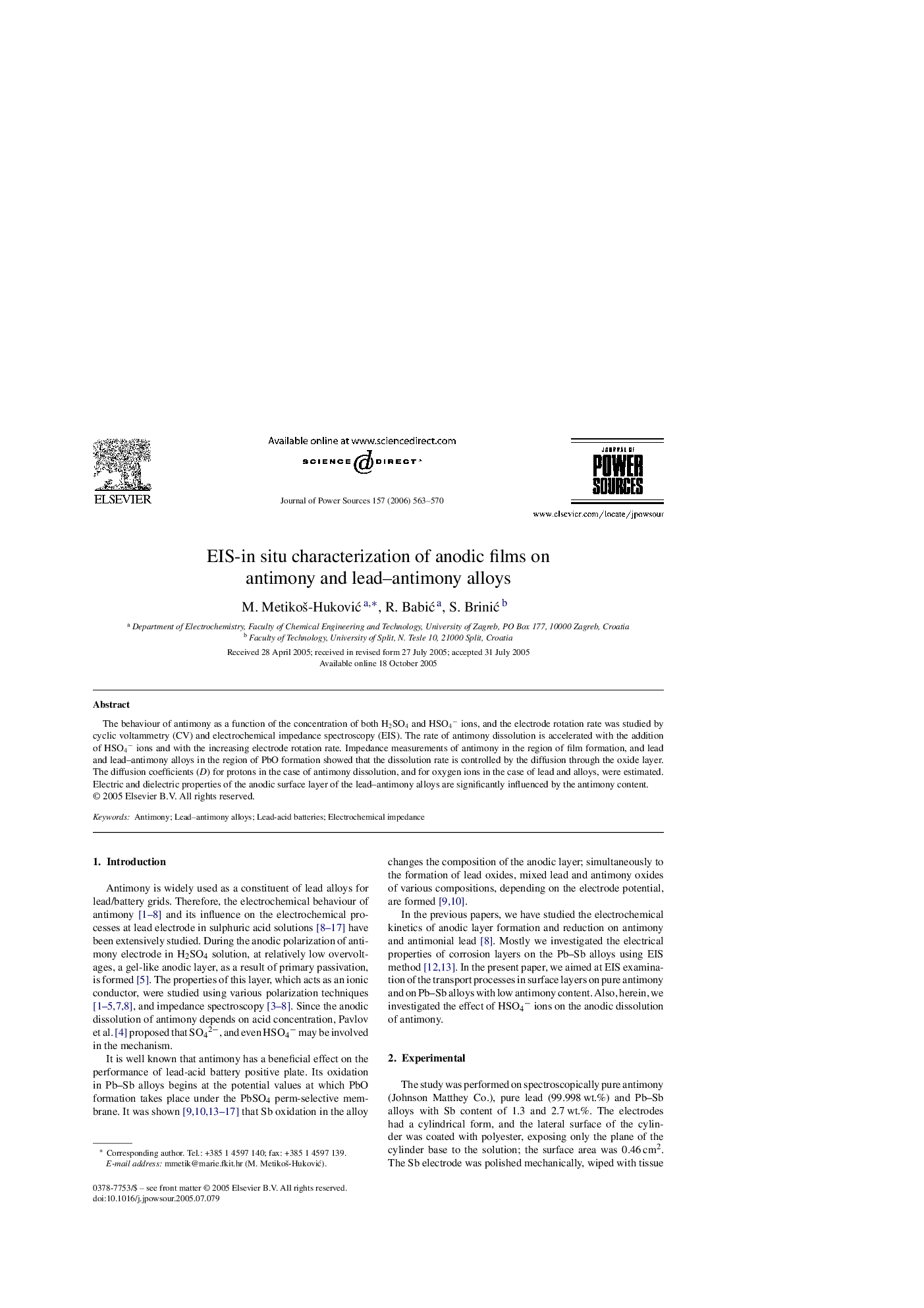| Article ID | Journal | Published Year | Pages | File Type |
|---|---|---|---|---|
| 1292710 | Journal of Power Sources | 2006 | 8 Pages |
The behaviour of antimony as a function of the concentration of both H2SO4 and HSO4− ions, and the electrode rotation rate was studied by cyclic voltammetry (CV) and electrochemical impedance spectroscopy (EIS). The rate of antimony dissolution is accelerated with the addition of HSO4− ions and with the increasing electrode rotation rate. Impedance measurements of antimony in the region of film formation, and lead and lead–antimony alloys in the region of PbO formation showed that the dissolution rate is controlled by the diffusion through the oxide layer. The diffusion coefficients (D) for protons in the case of antimony dissolution, and for oxygen ions in the case of lead and alloys, were estimated. Electric and dielectric properties of the anodic surface layer of the lead–antimony alloys are significantly influenced by the antimony content.
